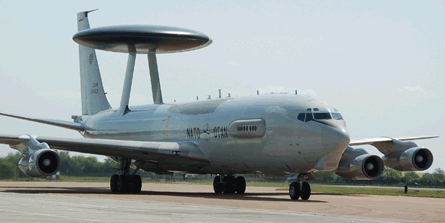NATO will provide improved air traffic control cover for Afghanistan under a newly approved deployment involving its Boeing E-3A airborne warning and control system (AWACS) aircraft.
Confirmed following a defence ministers' meeting in Brussels from 11-12 June, the action is being taken "in recognition of the significant increase in both civilian and military aircraft over Afghanistan and the lack of a ground-based radar network", NATO says.
Its announcement outlined an "immediate deployment" involving three or four of its 17 E-3As. The surveillance assets are expected to be flown from the alliance fleet's forward operating base at Konya in Turkey.
 |
|---|
© Craig Hoyle/Flight International |
Speaking ahead of the deployment decision, NATO Airborne Early Warning and Control Force deputy commander, UK Royal Air Force Air Cdre Dai Whittingham, said: "We are ready to deploy, and to support the International Security Assistance Force. Clearly, the [August presidential] elections will be a matter of interest for us," he added.
In addition to providing an air traffic control function, the E-3A fleet will be capable of managing airborne strike operations against the Taliban.
Home based at Geilenkirchen in northern Germany, NATO's AWACS force totals almost 1,500 military personnel, including 30 multinational aircrews. Sixteen alliance nations assign personnel to the force, with Romania having joined recently. The Czech Republic will be included soon.
For more information about intelligence, surveillance & reconnaissance aircraft, the ISR Special Report 2009 provides a snapshot of the active ISR fleet market by geographic region and role. The report also features the current major unmanned military platforms and is available to download for FREE.
Source: Flight International























